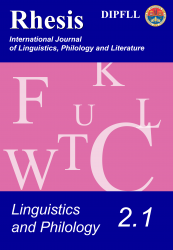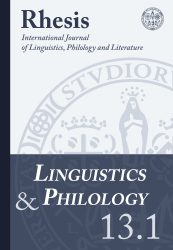Il presente articolo è un tentativo di analisi di una delle più conosciute opere di “Teatro dell’assurdo”, La Cantatrice chauve di Ionesco, attraverso un approccio linguistico. Poiché l’autore opta per un uso strumentale del linguaggio, la cui funzione è quella di descrivere la desolante perdita di valori umani nella società attuale, gli schemi comunicativi convenzionali devono essere aboliti, al fine di mostrare la natura irrazionale della maggior parte delle situazioni di vita quotidiana. L’impiego del nonsense, come espressione di questo sentimento manifestato nel corso dell’intera opera, genera una serie di discontinuità dialogiche, che potrebbero essere descritte per mezzo di una classificazione linguistica, basata su sette differenti tipologie di violazioni. Facciamo così riferimento alle seguenti violazioni, a seconda del tipo di discontinuità sviluppata: violazione lessicale (suddivisa in violazione alla designazione e violazione alla significazione), violazione cognitivo-enciclopedica, violazione pragmatica (alla conoscenza condivisa), violazione interazionale, violazione conversazionale (al principio di cooperazione di Grice), violazione del rapporto testo/contesto e violazione contestuale (da distinguere tra violazione descrittiva e violazione prescrittiva). Lo scopo di questo lavoro è di mostrare il grande numero di analogie esistenti tra le scelte dialogiche di Ionesco e ciò che può essere osservato, in un modo meno radicale, negli schemi comunicativi tradizionali.
 Linguistics and PhilologyVol. 2.1 - 2011
Linguistics and PhilologyVol. 2.1 - 2011
